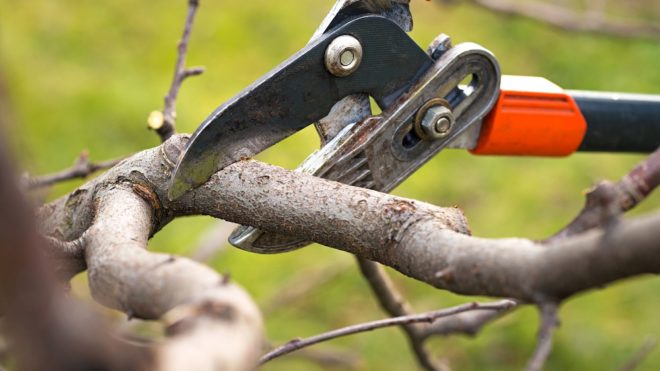Pruning trees helps them to look healthier and to grow stronger. If you have trees on your property, chances are that you have had them pruned to achieve these goals.
Tree pruning is an art. When done with care and precision, it can revitalize trees and make them beautiful for years to come.
However, on the other hand, it’s easy to over prune trees if you’re not careful. Over pruning trees will lead to the opposite of the results you seek.
Proper tree maintenance can be tricky for people who are inexperienced with it; it may be difficult for a homeowner to know whether his or her trees have been over pruned. Read on to learn the signs.
The What and Why of Having Trees Pruned
Tree pruning is the most common form of tree maintenance. Although trees in forests prune themselves, it’s up to homeowners to prune the trees on their property if they wish to have long-lasting trees that are both structurally strong and aesthetically pleasing. Pruned trees are safe, healthy, and attractive trees.
The Four Ds of Tree Pruning
Whether you do your own tree pruning or hire someone to do it for you, it’s best to adhere to the four Ds. The branches that you remove should be dead, diseased, damaged, or deranged.
You can tell if a tree branch is dead by breaking off a portion of it; if it makes a loud snap and you don’t see any green inside, then it’s dead.
A “deranged” branch is one that seems to be going rogue. These branches may rub against other branches or may grow in an unexpected direction.
How Much to Remove
While following the above guidelines, be very careful not to remove too much. All dead and diseased wood should be removed, but when it comes to living wood, it’s best to leave those decisions to the experts.
If you need to trim living wood off a live tree, no more than 20% of the live wood on a mature tree should ever be removed at one time.
What Not to Do
When it comes to pruning trees, there are a few things you should never do.
Before you even begin, consider current conditions. You should never trim a stressed tree; if your area is experiencing a drought, you should wait until it is over.
Remember, any time you cut a branch of a tree, a wound is left behind. A larger number of wounds make a tree more vulnerable to disease. The fewer wounds, the better.
Two of the most harmful pruning practices are topping and tipping. Topping cuts off large branches between nodes and is sometimes done to reduce tree height while tipping cuts off lateral branches to reduce tree width. Both of these methods will hurt your tree and make it very difficult for it to bounce back and to thrive in the future.
Over Pruned Trees Are Unhappy Trees
Over pruned trees will struggle to return to a healthy state. When a tree has been over pruned, those struggles will be evident. Over pruning reduces the foliage needed to make food for the tree, so in effect, it starves it.
When a tree has been over pruned, you may not see much new growth during the spring. In the winter, more branches than usual will break as a result of heavy loads.
Lack of foliage and large numbers of wounds will make your tree vulnerable to pests and disease. Over pruning can kill your tree over time.
Although it’s impossible to fix damage from too much pruning, there are some things that you can do to support your tree moving forward. Make sure it gets enough water and provide fertilization as well. If you need help with a tree that has been over pruned, please give us a call. We would love to help you help your tree today!

